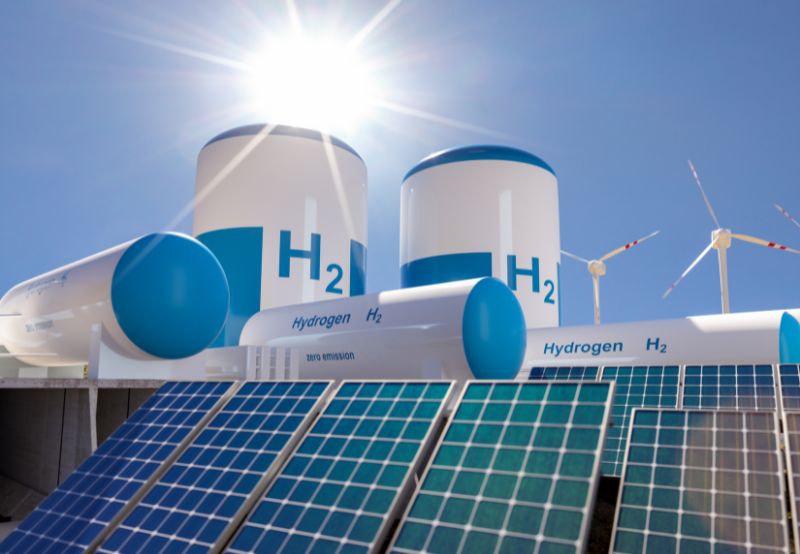India has announced a multi-pronged attack on the green hydrogen front, aiming to position itself as a global leader in this clean energy technology. This push, outlined by the Union Minister for New & Renewable Energy and Power, involves dedicated government initiatives, strategic investments, and collaboration across departments. Let’s delve deeper into the key developments:
 Spearheaded by the Ministry of New and Renewable Energy (MNRE), the National Green Hydrogen Mission, launched in January 2023, sets an ambitious goal: to transform India into the world’s central hub for green hydrogen production, usage, and export. This isn’t just a lofty ambition; concrete steps are being taken to make it a reality.
Spearheaded by the Ministry of New and Renewable Energy (MNRE), the National Green Hydrogen Mission, launched in January 2023, sets an ambitious goal: to transform India into the world’s central hub for green hydrogen production, usage, and export. This isn’t just a lofty ambition; concrete steps are being taken to make it a reality.
- Pilot Projects: Real-world testing is crucial for technological advancement. The mission allocates Rs. 1,466 crores for pilot projects across diverse sectors like steel production, mobility solutions (including shipping), and even decentralized energy applications. Additionally, exploring hydrogen production from biomass and developing efficient storage solutions are part of the pilot project portfolio.
- Research & Development: Innovation is the fuel that drives progress. Recognizing this, the mission dedicates Rs. 400 crores to a comprehensive R&D program. This program, implemented through a public-private partnership framework, fosters collaboration between government agencies and industry players to accelerate technological breakthroughs. Additionally, a dedicated Research and Development roadmap released in October 2023 outlines priority areas for research, ensuring focused efforts.
The Council of Scientific & Industrial Research (CSIR) is actively involved in the green hydrogen mission with its Rs. 75 crore Mission Mode Project. This project specifically targets the development of various types of indigenous electrolyzers, the workhorses of hydrogen production. Three key technologies are in focus:
- Anion Exchange Membrane (AEM) electrolyzers: These offer the potential for lower cost and higher flexibility compared to traditional options.
- Proton Exchange Membrane (PEM) electrolyzers: A mature technology known for its efficiency and compact size, further improvements are sought.
- Solid Oxide Electrolyzers (SOE) electrolyzers: High efficiency and fuel flexibility are key attractions of this technology, and further advancements are targeted.
Beyond electrolyzers, the project also aims to develop indigenous fuel cells and hydrogen storage cylinders. The overarching goal? Achieve performance levels comparable to the best in the world, ensuring India’s technological competitiveness in this critical arena.
While CSIR focuses on device development, DST’s Hydrogen and Fuel Cell program takes a step back, addressing the fundamental building blocks. Recognizing the importance of advanced materials, catalysts, and membranes, this program provides crucial support for their indigenous development. From fuel cell components to electrolyzer membranes and even hydrogen storage materials, DST is laying the groundwork for a robust domestic supply chain. Additionally, research on materials for advanced type IV cylinders and prototypes for various hydrogen and fuel cell applications is being supported, ensuring a holistic approach to technology development.
These initiatives paint a clear picture: India is serious about green hydrogen. By strategically investing in research, development, and pilot projects, the government aims to not only decarbonize its economy but also emerge as a global leader in this transformative technology. The potential benefits are manifold: cleaner energy, reduced dependence on fossil fuels, and a boost to the manufacturing sector. As India continues to accelerate its green hydrogen ambitions, the world watches with keen interest, for the success of this mission could pave the way for a cleaner and more sustainable future for all.




